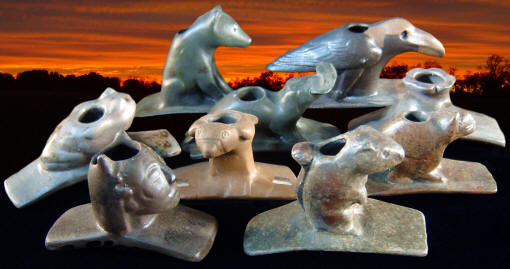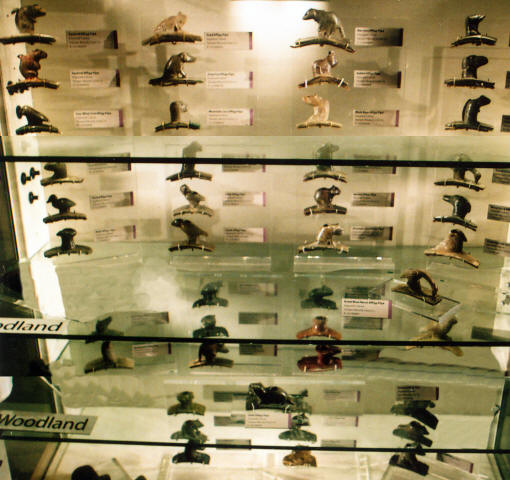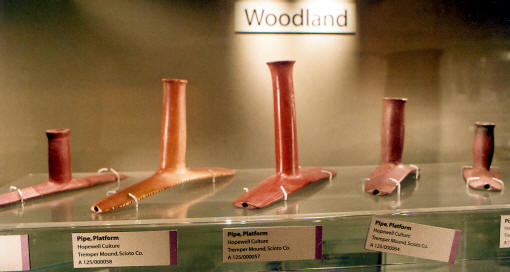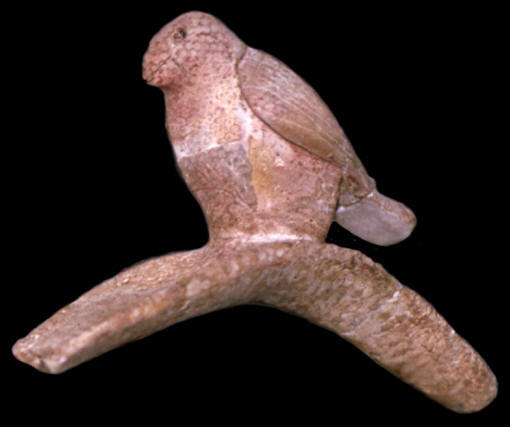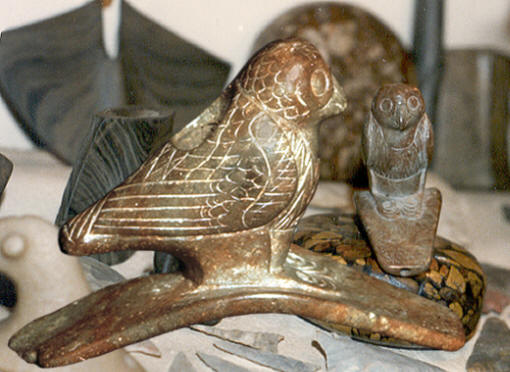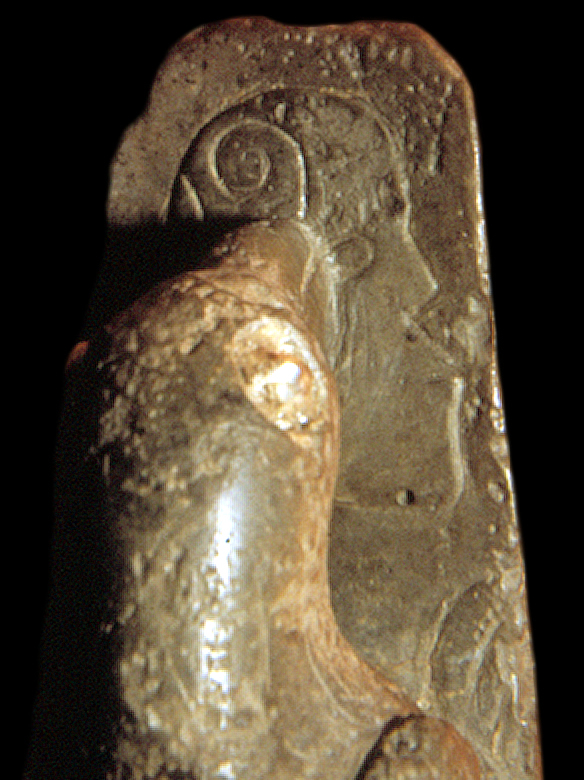|
|
|
Perhaps the most important pipes found at Mound City are the human effigy pipes. Although the Tremper collection didn't produce any at all, the Mound City group included four intricately carved and detailed human heads. They are important because they record how the Hopewell were decorating their faces, styling their hair, ornamenting their ears and using different types of headdresses. Shetrone writes about one of the carved heads as being, "one of the finest bits of Mound-builder sculpture extant." He goes on to describe this pipe as, "Note the haughty dignity of the face and the bonnet-like headdress. A chaplet of pearls encircles the forehead, and incised lines probably represent facial painting or tattooing." But it's interesting to note that Squire and Davis evidently had a higher appreciation for a different human effigy pipe as they wrote, "the most beautiful head of the series." and they go on to say "The workmanship of this head is unsurpassed by any specimen of ancient American art which has fallen under the notice of the authors, not excepting the best productions of Mexico and Peru. The whole is smooth and well polished." They are describing the complete example illustrated in this report. |
|
|
Some of the Mound City and Tremper pipes were additionally adorned with inlayed copper and pearl. Some of the pipes used either copper or pearls for the eyes. One of the human effigy pipes from Mound City had a row of 15 pearls that were inlayed along the top of the forehead and down both sides of the face to the level of the ears. The inlay was done by drilling small holes as close together as possible and filling each with a pearl. At least one of the human effigy pipes is also reported to have had copper earrings. Yet another use of copper, although not decorative, is reported as thin bands that were used to repair broken pipes, which is an indication that some of the pipes were in use before they were ritually destroyed. |
|
|
The Mound City and Tremper pipes were made from soft stones that were carved with stone tools. One of the more exotic stone and possibly the rarest example was a Tremper Mound bird effigy platform pipe carved in fossil coral. The majority of the pipes were carved in various types of pipestone. It was generally believed that all of the Tremper pipes were carved from Ohio pipestone. But Emerson reports that, of the Tremper pipes sampled and tested with a portable infrared mineral analyzer system, 16% of the pipes were made from Catlinite from the pipestone quarries in southwest Minnesota. Although there is a good source of pipestone only a few miles away to the east of the site, this is another example of how the Hopewell culture often preferred the use exotic materials from distant locations. |
|
|
The Tremper Mound site consists of one irregularly shaped mound approximately eight to nine feet in height and measures about 120 feet wide and 250 feet long. The mound is surrounded by a slightly oval embankment measuring 400 feet by 500 feet. |
|
|
|
|
The Mound City site is contained within 13 acres that is surrounded by a rectangular low embankment. There are 23 mounds within the rectangular enclosure. In fact, the site received its descriptive name from the high concentration of mounds within such a small area. |
|
|
It's interesting to note that many of the mound sites surveyed and described by Squire and Davis have been as Romain writes,"----extensively destroyed, we will probably never know their exact size." As an example, the Mound City site was selected to become Camp Sherman, a large military training center. Several of the mounds were leveled to make room for buildings. But the rest of the mounds were saved with a last minute plea from the Ohio State Museum. The camp was later dismantled after the war and the land was turned over to the Ohio Archaeological and Historical Society by the War Department. However, in this case, the mounds and earthworks were actually restored as Shetrone writes, "to their former condition." |
|
|
|
|
The Tremper Mound collection of pipes are owned by the Ohio Historical Society in Columbus, Ohio. Many of the better examples are currently on display. The Mound City collection of pipes were dispersed over a wide area. The greater portion of the pipes were sold by Davis to the Blackmore Museum at Salisbury, England who later sold, traded or loaned them to the British Museum in London where many are currently on display. The American Museum of Natural History is reported to have 13 of Squire's pipes, one of which is the human with the 15 inlayed and fragmented pearls. |
|
|
|
|
If your fortunate
enough to see the Mound City or Tremper pipes you'll probably be
impressed and agree that they were made by master craftsmen. Although the
intention of the original owners were to destroy the pipes by hammer and
fire, to either release the object's spirit or to remove any temptation
of theft, it's a good bet that most people are thankful that they've been
preserved. But you can't help but wonder that there must be some irony
in all the intended destruction and ultimate preservation. |
|
|
"REFERENCES"
1848, Squire, E. G. and E. H. Davis, E. H., "Ancient Monuments Of
The Mississippi Valley," p. 242-268. |
|
